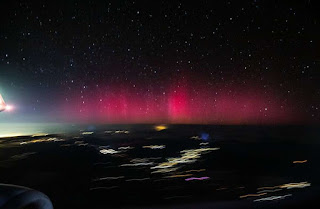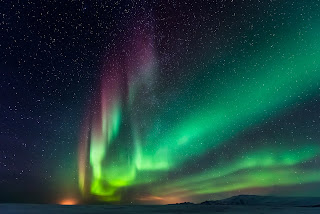Rare and Stunning: Northern Lights Spotted in Northern California
Rare and Stunning: Northern Lights Spotted in Northern California
The Northern Lights, also known as Aurora Borealis, are a natural phenomenon that occur when charged particles from the sun collide with particles in the Earth's atmosphere. These collisions create a beautiful display of light and color in the sky, often seen in the northernmost regions of the world. However, in recent years, the Northern Lights have been spotted further south than usual, including in Northern California.On the night of March 14, 2021, residents of Northern California were treated to a rare and stunning display of the Aurora Borealis. The lights were visible from areas as far south as San Francisco, which is over 500 miles south of the typical range for the Northern Lights. The light show was captured on camera by many lucky onlookers, who shared their photos and videos on social media.
This event was particularly special for those living in Northern California, as the area is not known for its frequent Aurora sightings. According to experts, the Northern Lights are typically only visible in areas above 60 degrees latitude, which includes places like Norway, Sweden, and Canada. However, on rare occasions, the solar storms responsible for the Aurora can extend further south, creating a unique opportunity for people in areas like Northern California to witness the spectacle.
Scientists believe that this recent display of the Northern Lights was caused by a particularly strong solar storm, which sent a large amount of charged particles hurtling towards Earth. As these particles collided with the atmosphere, they created the colorful display that was visible in Northern California and other parts of the world.
While the Northern Lights are a beautiful and awe-inspiring sight, they are also a reminder of the complex and interconnected nature of our planet and the universe around us. The solar storms that create the Aurora can also disrupt satellite and communication systems, and pose a risk to astronauts in space. Studying these events can help us better understand the workings of our solar system and prepare for any potential impacts.
For those lucky enough to witness the Northern Lights in Northern California or anywhere else, it is a truly unforgettable experience. The shimmering greens, pinks, and purples of the Aurora Borealis are a testament to the incredible beauty and power of nature, and a reminder of the magic that can be found in unexpected places.
The Northern Lights have captivated people for centuries, with ancient cultures attributing the phenomenon to gods or spirits. In modern times, scientists have been able to study the Northern Lights in more detail, but they still hold a certain mystique and wonder.
While the recent sighting of the Aurora in Northern California was a rare event, it serves as a reminder that the world around us is full of surprises and unexpected beauty. It also highlights the importance of preserving and protecting our planet's natural resources and environment, which are integral to sustaining the delicate balance that allows for events like the Northern Lights to occur.
For those interested in seeing the Northern Lights for themselves, there are a few key factors to keep in mind. The lights are most commonly visible in the winter months, when the nights are long and dark. They also require clear skies and a lack of light pollution, so heading to a remote location away from city lights is often necessary. Additionally, keeping an eye on solar activity can help predict when the Northern Lights might be visible in a given area.
Overall, the recent sighting of the Northern Lights in Northern California was a rare and exciting event for residents and visitors alike. While it may not happen again for some time, it serves as a reminder of the beauty and mystery of the natural world and the importance of preserving and protecting it for future generations to enjoy.






No comments